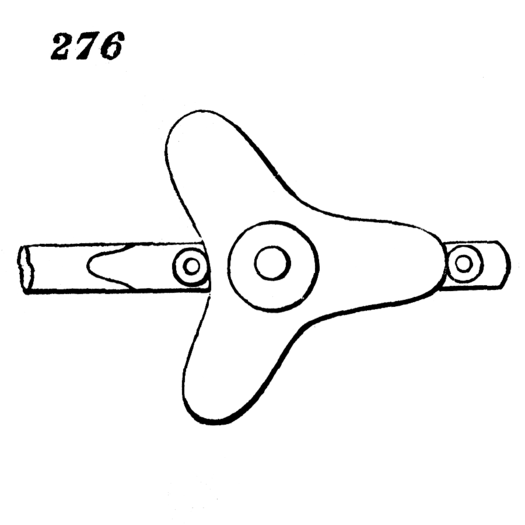
http://507movements.com/mm_276.html
According to the 507 Mechanical Movements archive, “continuous rotary motion of the cam gives a reciprocating rectilinear motion to the bar. The cam is of equal diameter in every direction measured across its center.” This mechanism translates rotational motion into horizontal motion that changes direction when one side of the bar reaches the peak of the rotating cam. I’ve noticed a couple of interesting things about this piece. At first, I thought it wouldn’t be able to function vertically, but after watching the animation, I noticed that both sides of the bar are always in contact with the cam, so the mechanism can work at any orientation and remain unaffected by gravity, since nothing is ever free falling. The speed of the horizontal motion is directly tied to the rotational motion; if the cam rotates faster, the bar will translate faster as well. The length of the spokes on the cam correspond to how far the bar translates, so shortening the spokes (and the distance between the pegs on the bar) would result in faster periodic motion.
I was wondering why each shape was specifically chosen. The bar makes sense, since it just needs to be an oblong object, and it’s current design uses the least material. As for the cam, I was wondering what would happen if it had four narrower spokes instead of three. This wouldn’t work, because both ends of the bar would meet the extrema at the same time. However, an odd number of spokes would always work, so long as there was a minima opposite to each extrema. I’m not entirely sure, but I think that another way of speeding up the rotation of the piece would be to add more spokes, but keep the overall radius of the cam the same.
These features make it very easy to fine-tune the displacement and rate of the movement, so this would be a good mechanism for something that requires precise movement. It is also rather compact, and lies rather flat. This makes me think that this mechanism would work well in a clock.

I really like the seemingly simplistic way this mechanism turns rotational motion into horizontal motion and I thought you did a great job explaining how the device does this. I also think that you asked some interesting questions. It would be interesting to see exactly how the number of spokes affects the speed.
I really like how some of these mechanisms utilizes the outer shape to get the motion desired. I like how you gave a very detailed explanation of your thought process of this mechanism. Your potential use for this mechanism is also very insightful
I love the device you have chosen! I am particularly mesmerized by the way in which circulation motion of one gear can be translated into horizontal motion of the whole rod. I also really like your detailed description about the device, it definitely helped clarify the image you have attached above.